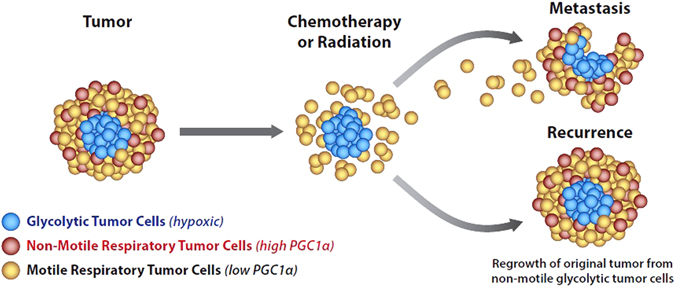Fig. 3.

The source and location of reactive oxygen plays a dualistic role in tumor cells. NADPH oxidases are tethered to the cellular membrane in part by Akt. These complexes generate superoxide that oxidizes redox-sensitive sulfhydryl groups in the cytoplasm. This leads to inactivation of cellular phosphatases, activation of cellular kinases, and polymerization of F-actin, allowing motility. In contrast, mitochondrial-derived reactive oxygen may be a highly pro-apoptotic mechanism, leading to VDAC channel formation, loss of mitochondrial potential and, thus, loss of ATP. Fusion mitochondria may be highly susceptible to these events, while fission mitochondria may be less susceptible to these events, and fission may serve as a defense mechanism against mitochondrial reactive oxygen. Acknowledgement and credit to Brian C. Brockway, M.S., Medical Media, Atlanta VA Medical Center
